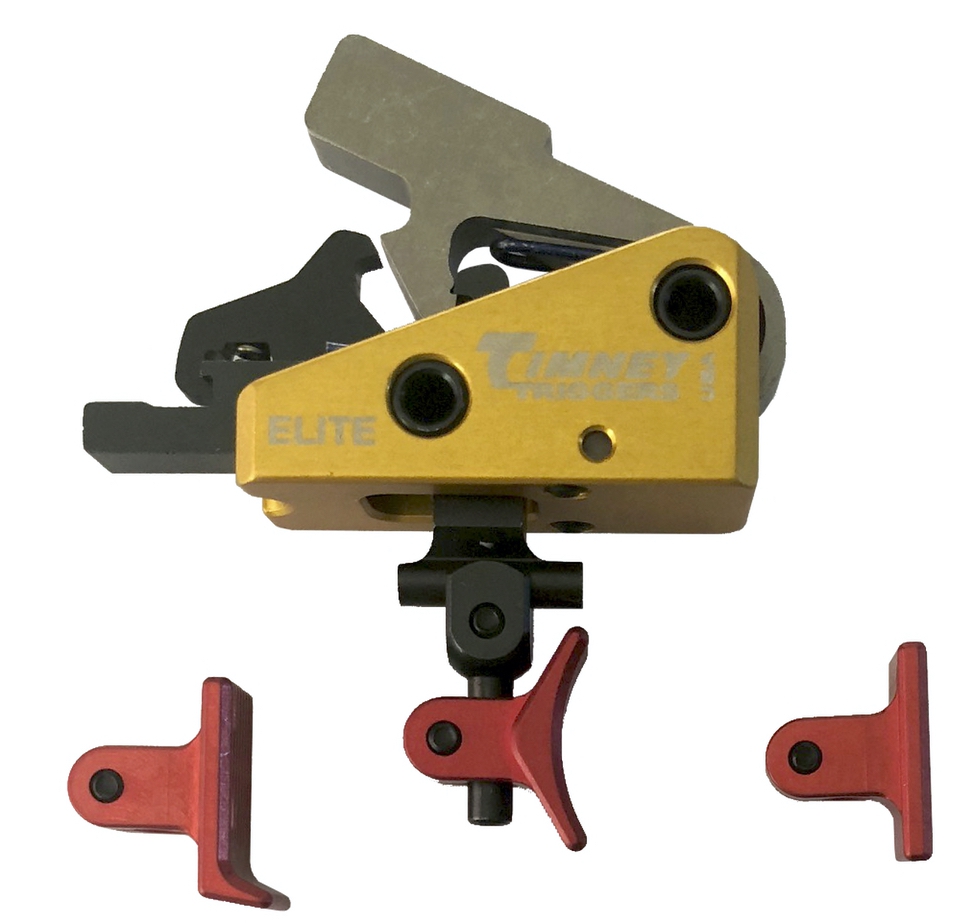Aftermarket Triggers: The Basics and Benefits of Using One
Apr 3rd 2020
The WON features Timney Triggers. Click here to view the article.
You’ve probably heard the saying, “You don’t know what you don’t know.” When I first began working with various firearm platforms, I only knew what my guns’ triggers felt like. Later, as a trainer and writer, I had the opportunity to shoot other people’s guns. That’s when I learned about the feel of different triggers and why some people struggle shooting their guns. It’s also when I learned and understood the benefit of aftermarket triggers like my Timney Trigger.
If trigger press is one of the fundamentals of marksmanship, why not set yourself up for a better trigger press? As I mentioned, I’ve pressed a lot of people’s triggers in our carbine classes. It doesn’t surprise me that some students can barely hit the target after I feel the triggers on their rifles. It’s usually a delightful surprise when they shoot my Timney Trigger. They mention how easy it is to press and how clean it breaks.
Finding Your Aftermarket Trigger
Just like an everyday carry pistol decision and holster style are very personal, so is trigger choice. For example, although I can shoot it, I’m not as comfortable shooting my husband’s AR as I am mine. When you decide to purchase your new aftermarket trigger, take the time to handle the different styles and designs. Decide what feels right in your hand.
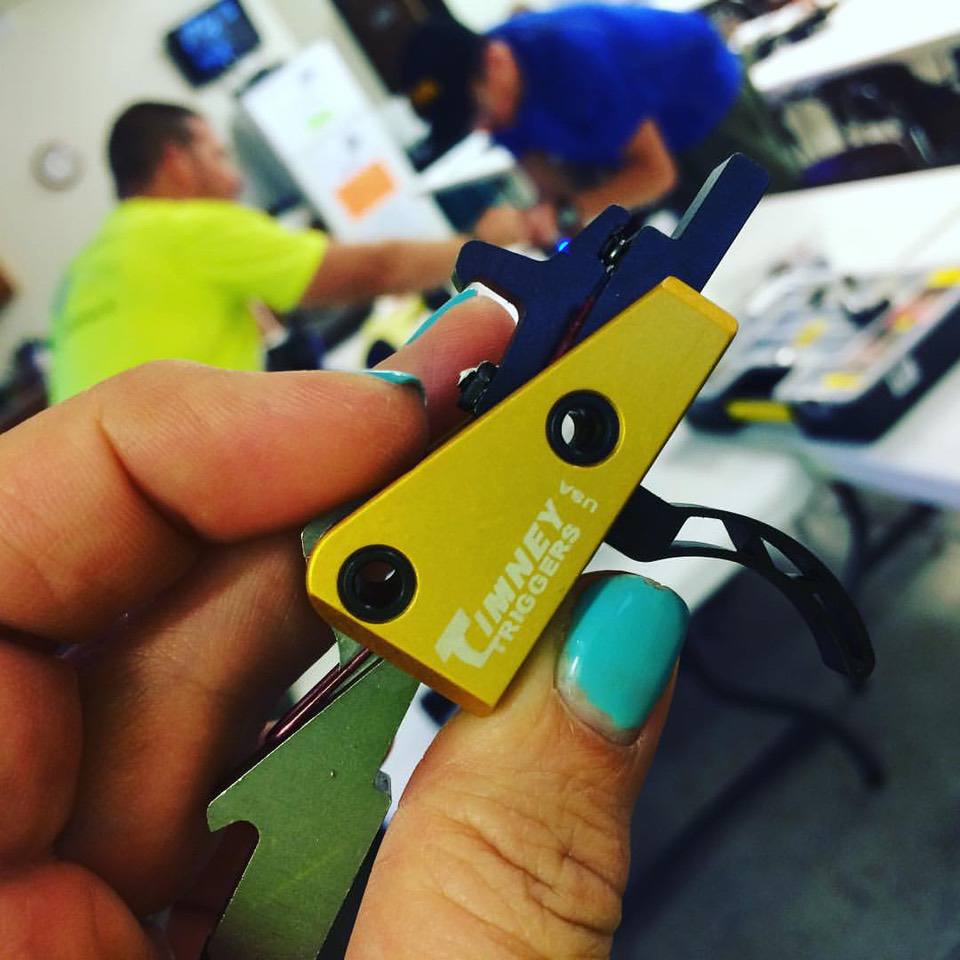
Single-Stage and Two-Stage Triggers
Single-stage triggers have no slack or pre-travel. When you place your finger on the trigger and apply enough rearward pressure, the gun fires.
Two-stage triggers have slack or pre-travel before they get to a pressure wall. From here the trigger press truly begins. You will need to take this space up before concentrating on your pull.
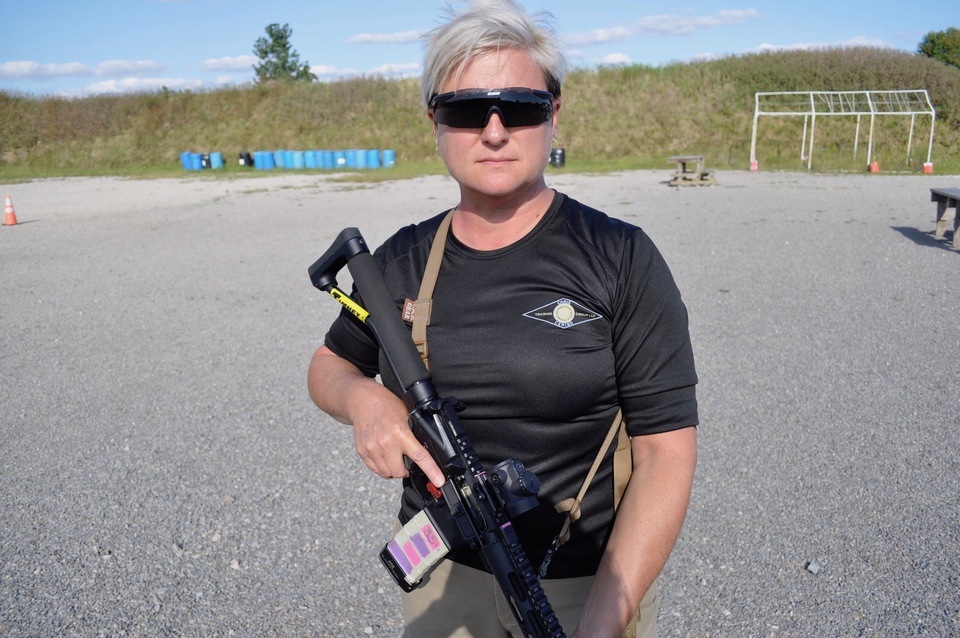
Michelle Cerino with her 3-Gun carbine.
Trigger Pull Weight
The amount of pressure on the trigger required to fire the gun is the pull weight. The following is a guide for pull weight selection:
2- to 2.5-pounds:
Light trigger pull weights are appropriate for target shooting. But more appropriate for bench rest shooters. Mostly for safety reasons.
3- to 3.5-pounds:
By far the most common trigger pull weights -this is great for virtually all applications including target shooting, hunting and 3-gun competitions.
4.0-pounds and more:
Heavy trigger pull weights are good for cold weather hunting or applications where you may be shooting with gloves on.
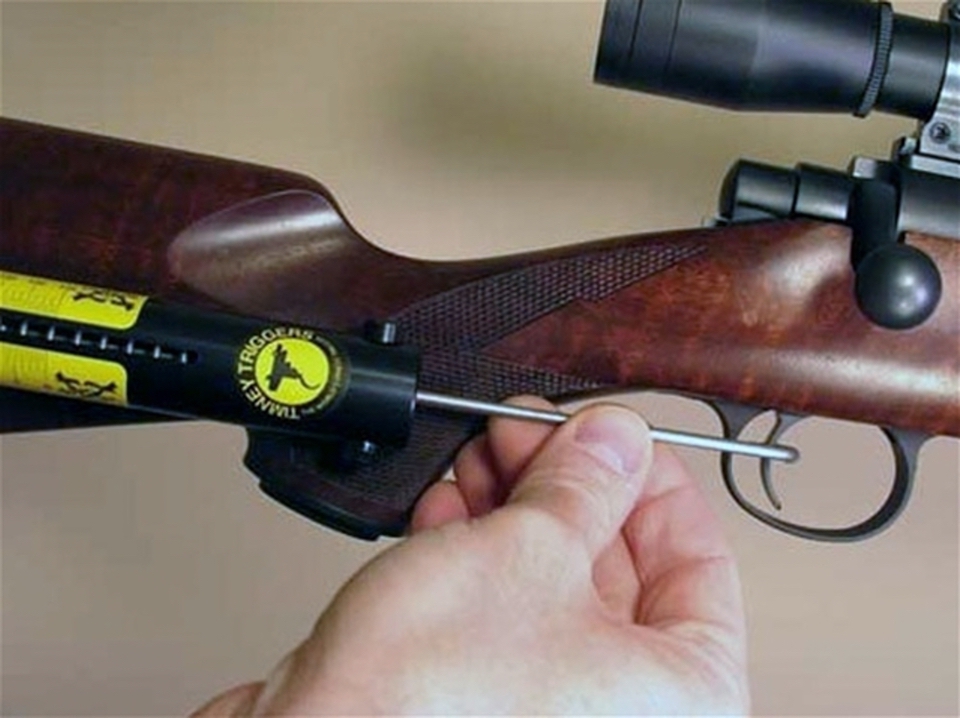
The Timney Pull Weight Gauge gives accurate, consistent pull weights from 8-oz to 10-lbs. and is calibrated in Kg weights as well. It includes a tattle-tail indicator and wide hook, and is compact and easy to store with your gear. Also available in 1 lb to 25 lb increments so you can test your original factory trigger.
It’s important to find the trigger pull weight you are most comfortable using. My husband has his AR trigger set at 1.5 pounds, while I like mine heavier at 3.5 pounds. I like to be able to touch my trigger and feel some resistance before I shoot. However, this is just my personal preference.
Trigger Types
The 2 main trigger types are curved and straight. Again, just like trigger pull weight, trigger type is a personal preference.
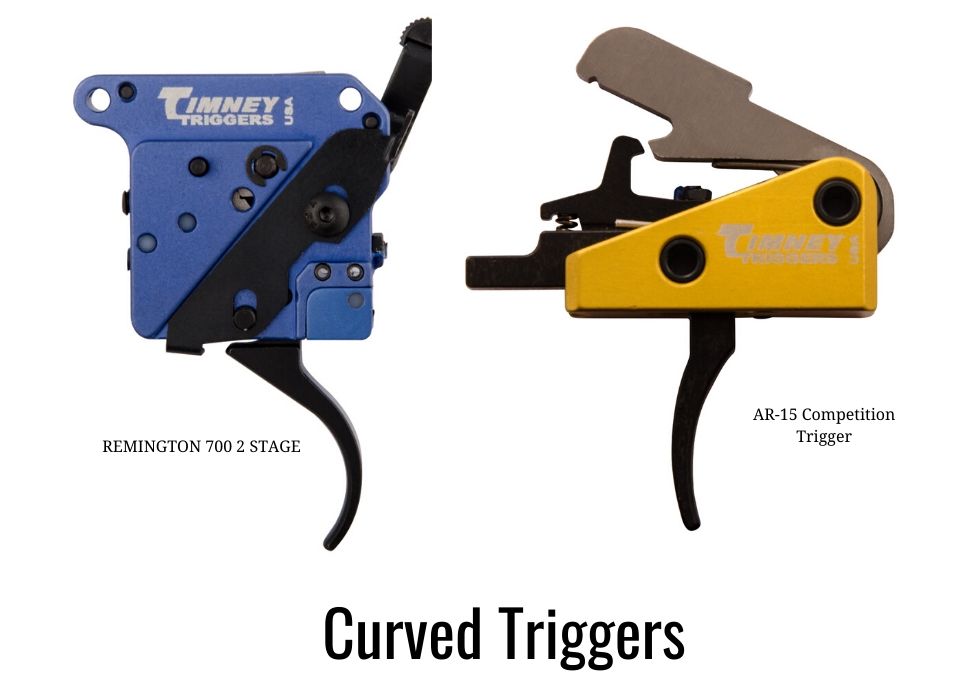
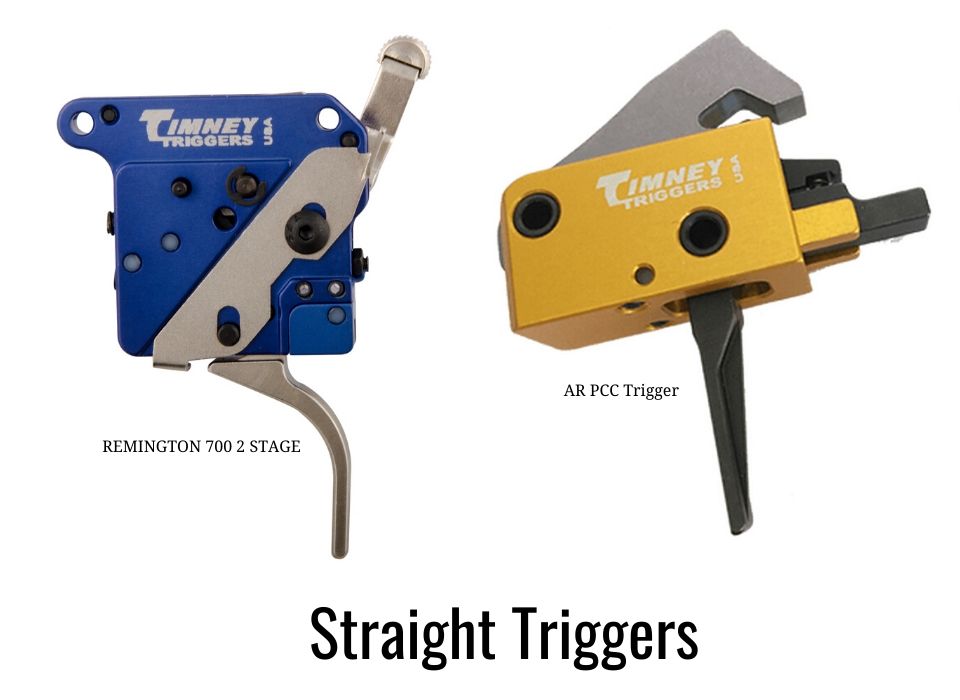
Calvin Elite Single Stage Drop In Trigger
For those who decide on a single-stage trigger, Timney’s Calvin Elite trigger is a great choice. It offers a custom fit for every shooter. The Calvin Elite arrives with all 3 trigger shoe options. This gives a shooter an opportunity to experiment with each option and decide what design fits the best. The shoes also are adjustable for length of pull, cast and height. A custom fit with positive contact will allow for more accuracy with the firearm.
